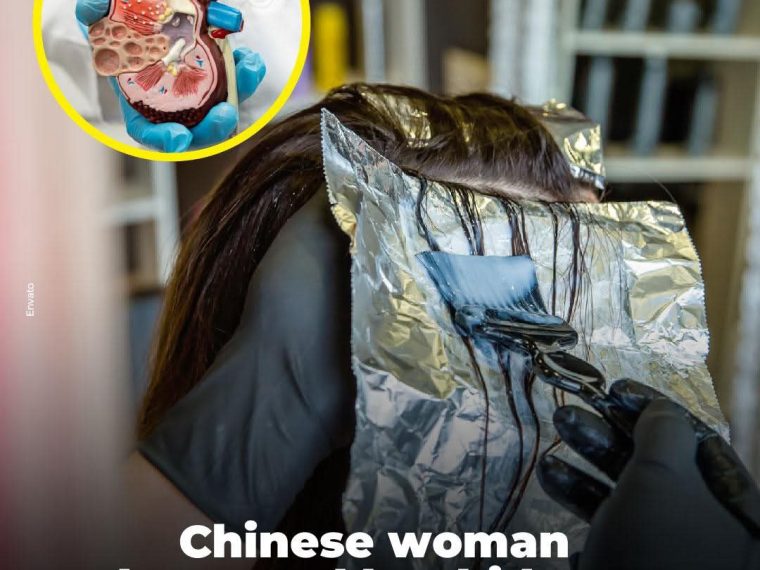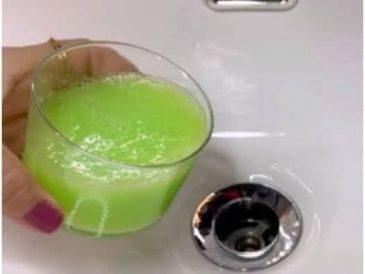🚨 Chinese Woman Develops Severe Kidney Inflammation After Frequent Hair Dyeing — What You Should Know
A shocking health scare out of Zhengzhou, China, is raising alarming questions about the safety of regular hair dye use. A 20-year-old woman was recently hospitalized with acute nephritis (kidney inflammation), and doctors believe her repeated exposure to toxic chemicals in hair dye played a central role.
Here’s how the story unfolded — and what the science says about hair dye risks to your kidneys, organs, and overall health.
🏥 What Happened: The Case of “Hua”
According to multiple news reports, the woman, identified only by the pseudonym Hua, had a habit of coloring her hair once every month, inspired by K-pop idols who frequently change hair colors. (South China Morning Post)
In September 2025, Hua began experiencing troubling symptoms:
- Red spots (petechiae or rash) on her legs
- Abdominal (stomach) pain
- Joint discomfort and swelling
When she was admitted to Zhengzhou People’s Hospital, medical tests revealed she had kidney inflammation (acute nephritis). Her doctor, Tao Chenyang, linked the condition to toxins absorbed from the repeated hair dye applications. (South China Morning Post)
Dr. Tao warned that many hair dye products contain heavy metals (like lead and mercury) and other chemicals that, over time, can damage not just kidneys but also the respiratory system and increase cancer risk. (Business Standard)
🔬 What Does the Medical Literature Say?
While high-profile cases like Hua’s are still rare, there is scientific and clinical evidence pointing to potential dangers associated with chemical hair dyes.
1. Chemicals in Hair Dyes Can Be Nephrotoxic
Many hair dyes contain compounds such as para-phenylenediamine (PPD), aminophenols, heavy metals, and aromatic amines. (PMC) In some cases, these substances can be absorbed through the skin or scalp and enter the bloodstream, eventually being filtered by the kidneys. (brightkidneycentre.com)
In severe exposures or poisoning cases (intentional ingestion, for example), acute kidney injury (AKI) and acute interstitial nephritis (inflammation of kidney tissues) have been documented. (PMC)
One study of a keratin-based hair product (used for hair straightening) implicated it in AKI, showing that even products not labeled as “dye” may pose risks. (ScienceDirect)
2. Chronic and Cumulative Effects
Chronic or frequent exposure to dye chemicals increases the risk of accumulating low-level damage over time. This may lead to chronic kidney stress, weakening of renal function, and increased vulnerability to disease. (PMC)
Some hair dyes also contain lead acetate or bismuth sulfate, which in rare cases have been implicated in chronic kidney disease or interstitial nephritis. (PMC)
3. Other Health Risks: Respiratory, Cancer & More
- Respiratory Effects: People exposed to dye fumes (professionally or frequently at home) may suffer from asthma, rhinitis, or other respiratory irritation. (PMC)
- Carcinogenic Potential: Some chemicals in dyes are classified as possible carcinogens. The International Agency for Research on Cancer (IARC) has flagged certain aromatic amines used in dyes as having mutagenic or cancer-associated properties. (Wikipedia)
- Allergic and Systemic Reactions: Some individuals develop allergic reactions, skin irritation, or systemic toxicity from PPD and related compounds. (PMC)
⚠️ What Symptoms to Watch Out For
If you or someone you know dyes hair frequently, be alert to possible warning signs:
- Persistent rash, red spots or bruising on skin
- Swelling in legs or ankles (edema)
- Unexplained fatigue or malaise
- Abdominal pain or discomfort
- Changes in urination (decreased volume, foamy urine)
- Joint pain or stiffness
If you notice these, especially in conjunction with a history of frequent chemical exposure, seek medical evaluation including blood and urine tests for kidney function.
✅ Tips to Dye Safer (If You Choose To Dye)
If you enjoy changing hair colors, you don’t necessarily have to give it up — but take precautions:
- Limit frequency. Spacing out dye sessions helps reduce cumulative exposure.
- Patch test first. Always test a small area to watch for reactions.
- Choose safer formulations. Opt for ammonia-free, VOC-reduced, or “natural” dyes (though these, too, may carry risks).
- Use protective gear. Wear gloves, apply barrier creams, ventilate rooms, avoid inhaling fumes.
- Rinse thoroughly and promptly. Don’t exceed recommended time intervals.
- Alternate with non-chemical methods. Try semi-permanent colors, henna (with proper sourcing), or hair chalks.
- Regular health checkups. Monitor kidney, liver, and respiratory health if you dye frequently.
📝 In Closing
The case of the 20-year-old Chinese woman is a stark reminder that the beauty trends we chase can carry hidden hazards. While hair dyeing has long been considered relatively safe when used responsibly, frequent and repeated chemical exposure may push some users into dangerous territory.
If you dye often, be vigilant about choosing safer products, limiting use, and staying attuned to your body’s signals. And if symptoms arise, don’t delay — your kidneys (and overall health) may depend on it.
Would you like me to format this into a SEO-friendly version (with meta title, keywords, summary) so you can post it straight to your blog?





